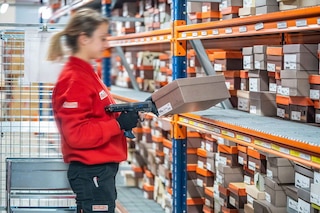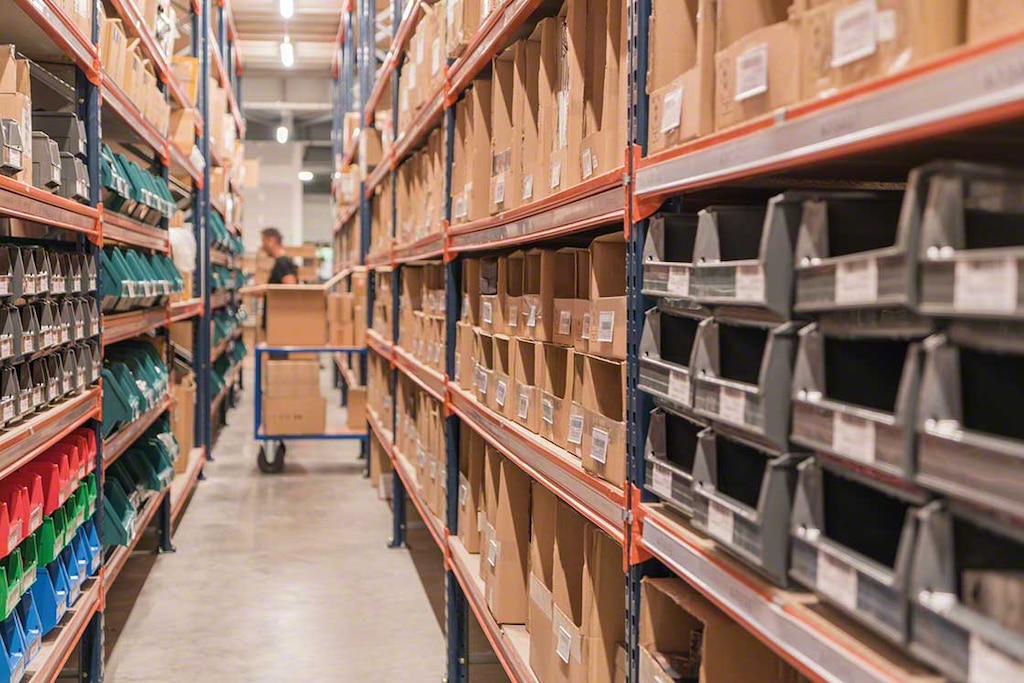
Pick-to-cart: when should I use it?
Pick-to-cart is a picking method in which operators go directly to the location of the products they need using a cart, where they deposit and sort the goods.
It’s common practice to employ picking carts following the batch picking methodology. Pick-to-cart can also be combined with zone picking (each operator is assigned to a specific area) and wave picking (order prep windows are sequenced).
Pick-to-cart characteristics
The pick-to-cart system requires a low upfront investment, since it falls under the umbrella of person-to-product models with little automation.
Pick-to-cart is particularly recommended when:
- There is a high concentration of SKUs stored and, thus, runs are limited.
- The merchandise in stock is small and easily transportable.
- There are many orders with common SKUs. In this case, the employee would go to the specific location and pick all the SKUs at once.
- The number of SKUs is limited; the more SKUs you manage, the more complex (and error-prone) your sorting operations will be.
Pick-to-cart is not the best option when:
- There’s a high volume of orders, since the traffic generated in the aisles could congest the warehouse. This problem could be solved by installing a conveyor system for boxes that connects the various areas of the installation.
- It’s necessary to travel long distances. In this case, to gain in speed, it would be better to use electric handling equipment, such as order pickers or pallet trucks.
- The products stored are bulky or difficult to handle manually. Even if they don’t seem too heavy at first, you have to take into account the sum of all of them.
Types of picking carts
Your choice of picking cart will also directly impact the productivity of pick-to-cart operations. For example, the cart’s dimensions and the material it’s made of can limit its maneuverability. Examples of picking carts include the following:
- Roll containers: these are metal carts with mesh walls that enable packages to be transported safely. When used with pick-to-cart, they are usually equipped with horizontal shelves, multiplying their capacity.
- Picking cart with crates: each container is usually labeled with a barcode. This is scanned, together with the product deposited inside the crate, so that the warehouse management system knows the location of each SKU at all times. When the picking round is finished, the items are packaged to be dispatched.
- Picking cart prepared for pick-to-box: with the pick-to-box method, the package where the goods are to be placed is preselected; the picking route is started and order pickers put the SKUs directly into the box.
- Picking carts for special items: just as picking shelves, carts can be designed taking into account the characteristics of the goods stored. For example, there are carts with bars for hanging clothes.

Technology to speed up pick-to-cart operations
It’s impossible to run efficient pick-to-cart operations without the help of a warehouse management system that designs picking routes and organises processes. Likewise, you can’t implement this method without identification devices, such as radiofrequency terminals or voice picking systems, that transmit information about the processes to the WMS.
To increase pick-to-cart productivity and improve ergonomics, a new generation of picking carts, called smart carts, has taken installations by storm. Their main feature lies in the fact that they’re connected to the warehouse management system.
Many smart carts have built-in pick-to-light indicators that alert order pickers as to the slots corresponding to each product to be placed in the cart. The operator switches them off when the task has been completed, just as with pick-to-light shelves.
In addition, some smart cart models are similar to mobile workstations: they enable paperless picking by incorporating a small computer or tablet that tells the operator what steps to take.
In spite of its apparent simplicity, the pick-to-cart order prep method continues to offer considerable advantages. Plus, it can coexist with other picking methodologies under the same warehouse roof. The important thing is to analyse in depth the characteristics and types of orders and goods in your installation to find the most effective formula.
For more information, we encourage you to contact us so one of our Mecalux specialists can analyse your warehouse operations.
